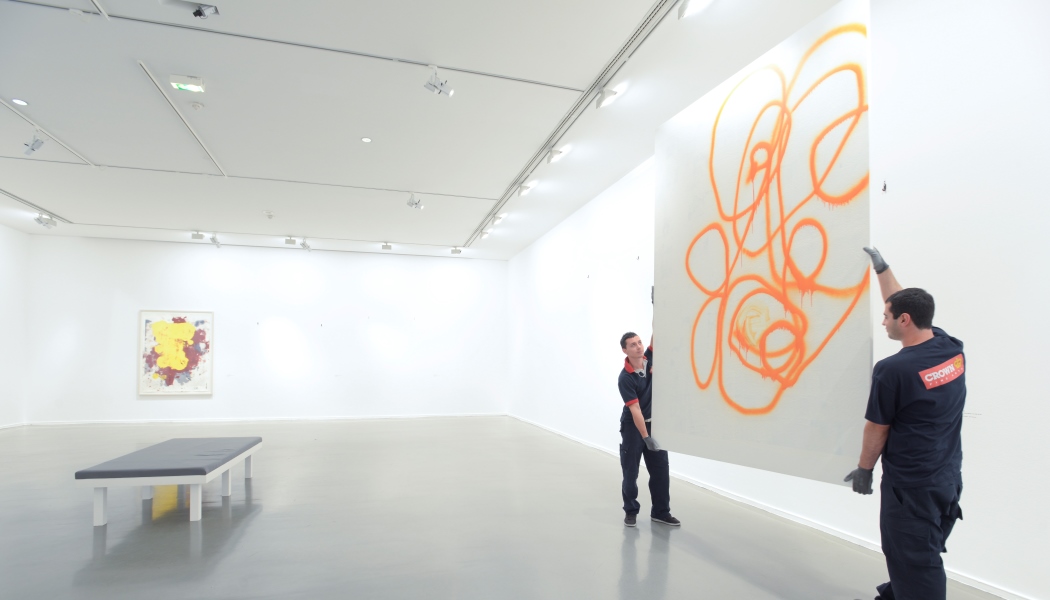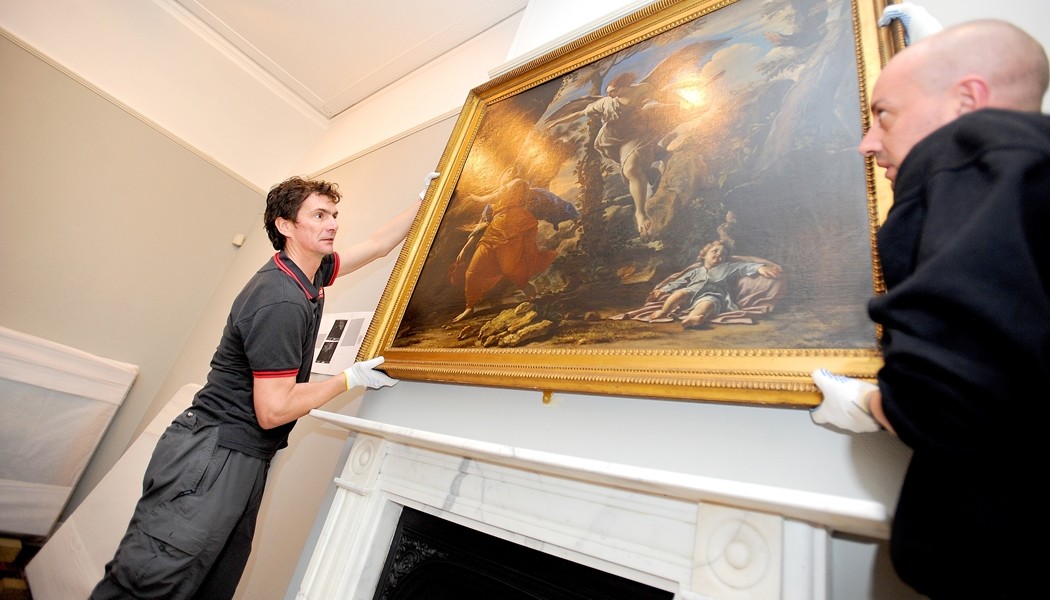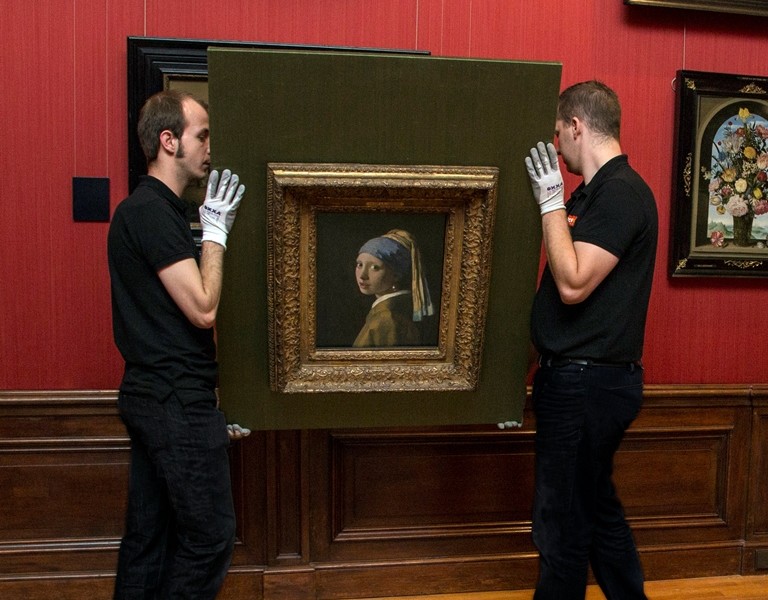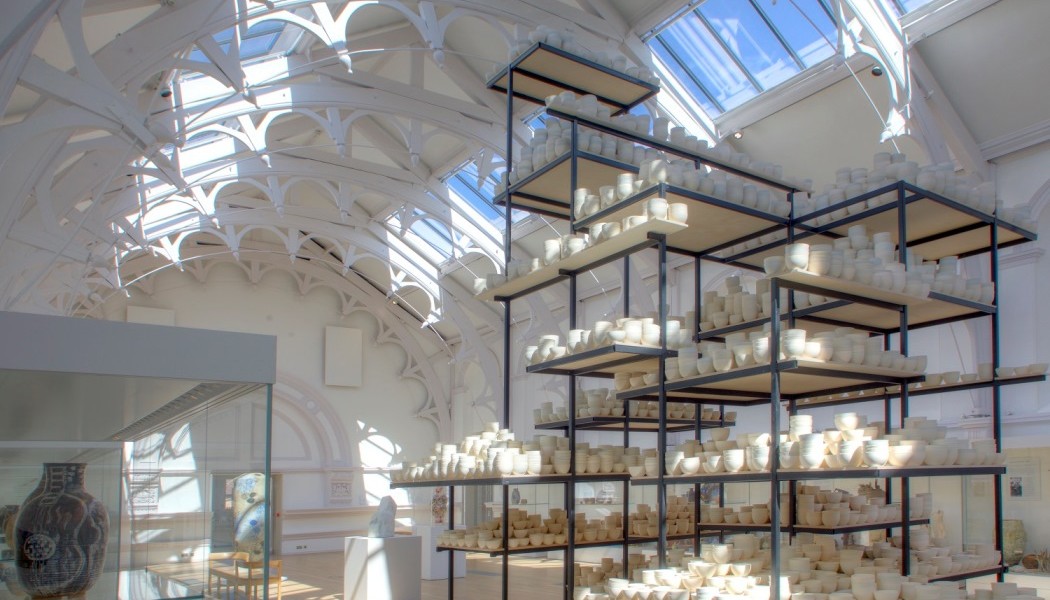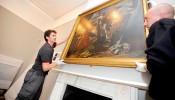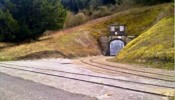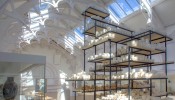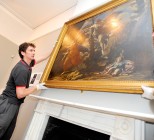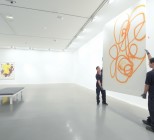The packaging and transportation of collections is often a long process – in fact it can begin years in advance, and certainly two or three months before the item is to be moved. Risk assessments and method statements are written long before the item even sees a crate and part of our role is to provide a strategic plan.
The operation normally opens with discussions with the registrar, the ‘librarian’ for museums in charge of documentation and arranging the movement. They are the main point of contact for any move, dealing with everything internally and setting specifications for transport.
For instance during the recent project at York Art Gallery we dealt very early on with the registrar, Melanie Baldwin, and continued to work very closely with her throughout the move. The York Art Gallery project was an interesting one because it took three years and opened to the public on 1 August, so it’s very current.
It involved moving all the museum’s paintings into Crown’s storage while the gallery was completely refurbished. The storage vault we used is 200 feet underground with only one access route. As it is underground, it is easy to control the temperature and humidity – and this prevents artwork expanding and cracking due to changes in moisture. A team of curatorial staff from York Art Gallery regularly came to check the items were in top condition. Crown staff would accompany them and make sure items were carefully moved.
In all 18 truckload journeys were made over a period of six weeks. We amassed 160 cubic metres of items in storage in all – almost all of the items being very fragile and old. If we focus on the vehicles, for instance, they need to be secure, equipped with air suspension, insulated, climate controlled and with a humidity and temperature that replicates that of a museum.
Technology is improving all the time and we have been upgrading our trucks to reflect that. On-board CCTV has been a recent addition; it allows couriers to monitor their cargo throughout the journey (they can even tune in remotely through a secure link). Loaded by specially-trained technicians, the vehicles are equipped with air suspension to mitigate the damaging effects of vibration, plus temperature and humidity controls to keep the environment as close to a museum environment as possible.
The crew is also highly skilled, trained in packing and handling while all Crown Fine Art premises are inspected by security and conservation advisors. This advice comes directly from the UK government and the Arts Council.
We have dealt with many priceless items over the years – from ancient Bibles for Cathedrals and libraries to moving the Magna Carta and relocating and installing Henry VIII’s canons and anchors at the Mary Rose Museum in Portsmouth. Our colleagues in France even moved the Mona Lisa.
In order to make this work the most important scheme we adhere to is the UK Government Indemnity Scheme (UKGIS), which is crucial to our industry. Without it the practice of museums ‘loaning’ items to other museums both in the UK and around the world would be almost impossible due to the huge cost of commercial insurance.
The GIS provides borrowers with an alternative to the considerable cost of commercial insurance. It means that a museum, gallery, archive or library can arrange to borrow objects from non-national institutions and in the event of loss or damage, compensation will be paid to the owner by the Government. The Government effectively carries the risk rather than an insurance company.
As you can imagine, it means there are some very strict guidelines for companies such as Crown Fine Art that move museum pieces. It sets out very clearly the training and vehicle standards that need to be adhered to.
When it comes to shipping abroad, high end institutions almost always insist on sending a courier – a museum conservation or registrar department representative – to ‘babysit’ any work and working seamlessly with them is the key for both shipping partner and borrowing gallery.
For small pieces, such as miniatures, small works on paper or sculptures, it may be possible to fly encased in a purpose-built box as ‘hand carry’ on a passenger jet. The work will have its own seat in business class (sometimes even two) and Crown technicians escort the museum staff and even board the plane to ensure it is properly strapped in. Crown Fine Art has special passes allowing staff to be on the tarmac at the airport, helping items into the plane. They attend extensive aviation security training to do this; it’s vital to give clients confidence that there will be no mishandling en route.
Airports pose two major challenges for the moving of art; dealing with forklift drivers and dealing with customs. Technicians will normally need to be on hand, again using airside passes, to ensure airport forklift drivers slow down and take more care; and at customs a mound of paperwork is required to navigate issues around VAT and duty. Many museums and galleries are registered in the government’s NIRU (National Imports Relief Unit) system and exempt from paying VAT and duty on artwork imported to be displayed rather than sold. But even so the process can be complicated. Trucks frequently travel abroad, too, and offer a courier service for up to six people looking to get to museum or art gallery with their collection.
Good communication is the key – between lender, borrower and the agent in the middle. There’s a real need for diplomacy as well as technical skills in our job. Experience is also important. Every job brings a new challenge but skilled technicians who have seen and dealt with a wide range of problems in the past have an advantage. In the end it’s all about the planning process; if you can think ahead and identify every possible problem that lies ahead then you can cope with anything the job throws at you. Trust is also key. Museum artefacts and paintings are high-value, fragile objects – and so conserving them for future generations is of paramount importance. Museums need to understand all the risks, understand all the liability issues and work hand-in-hand with the mover to ensure items are moved safely and securely.

